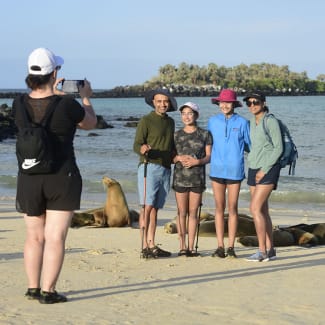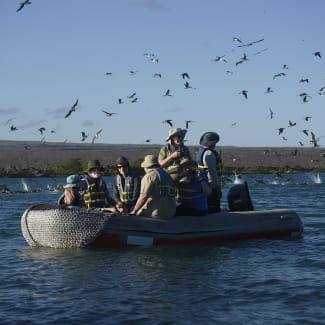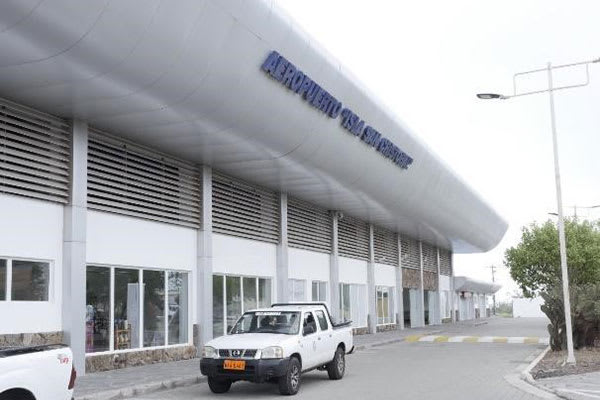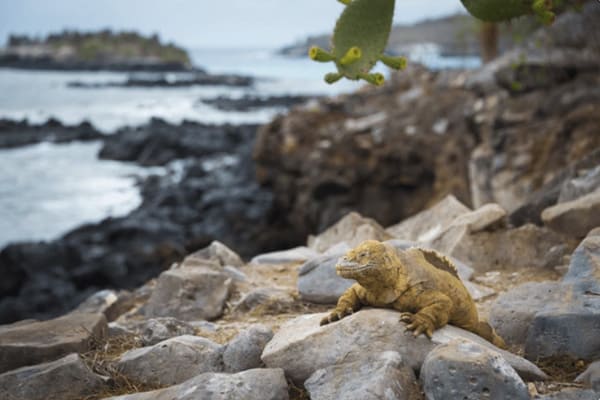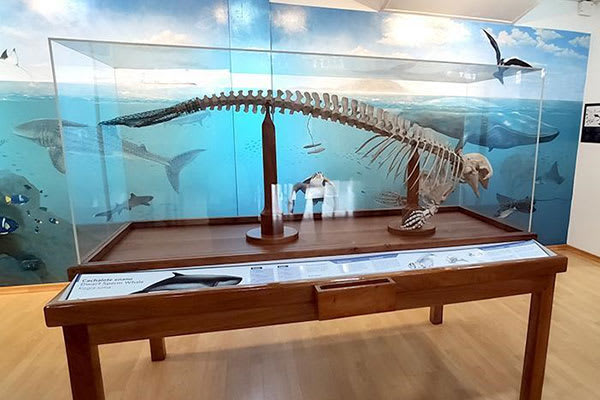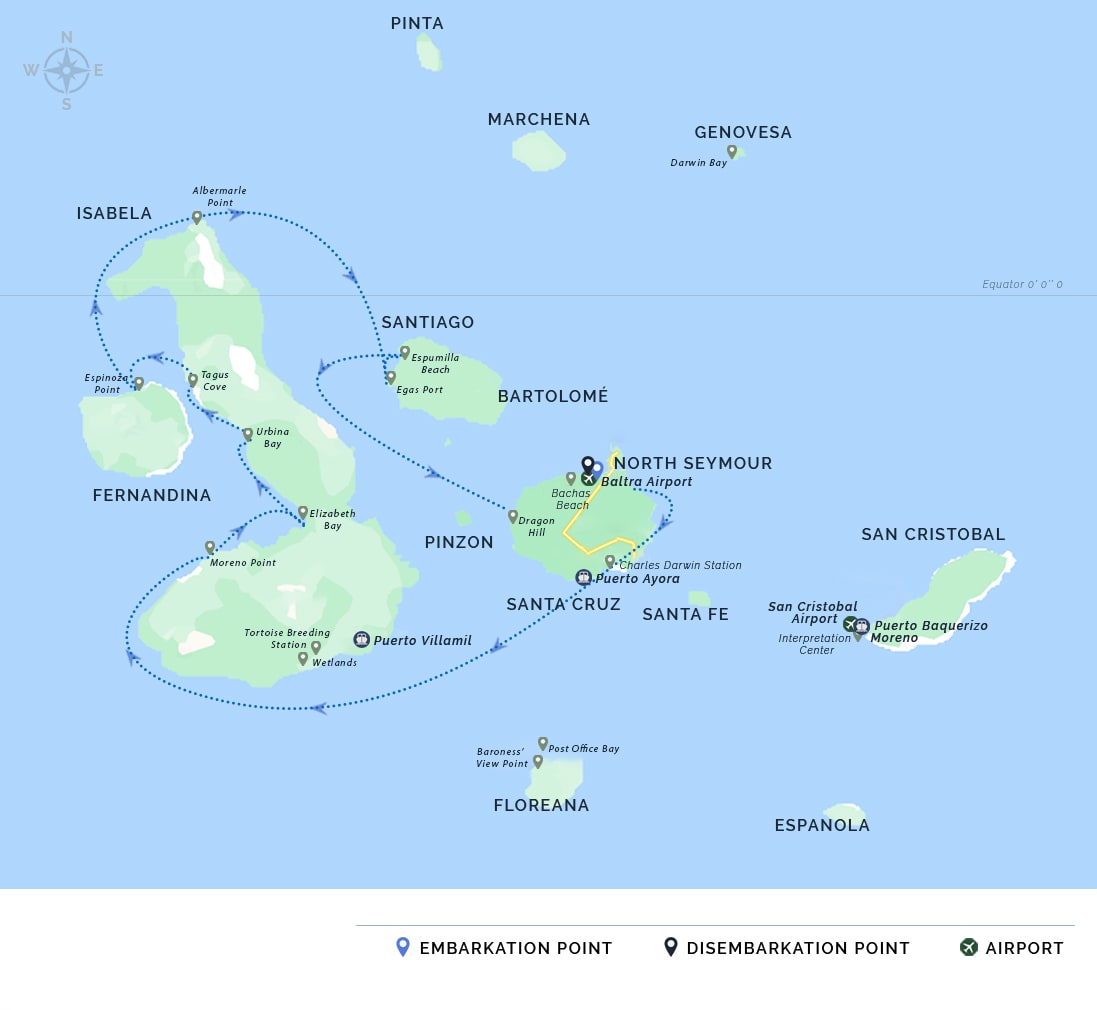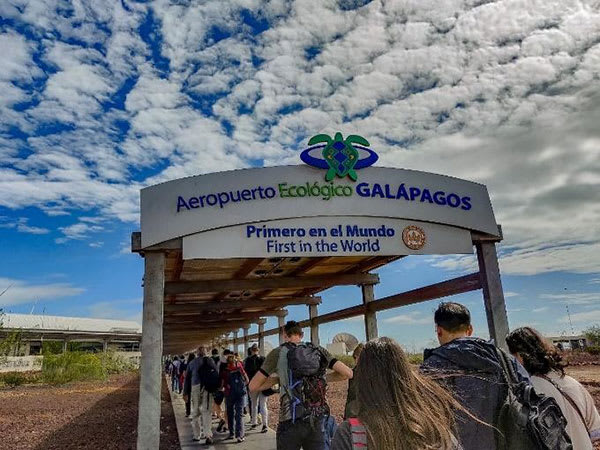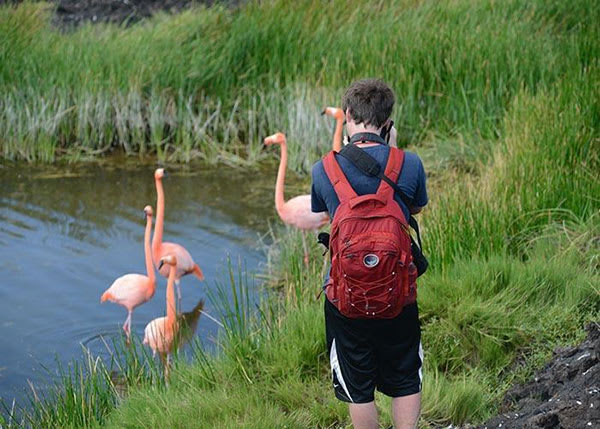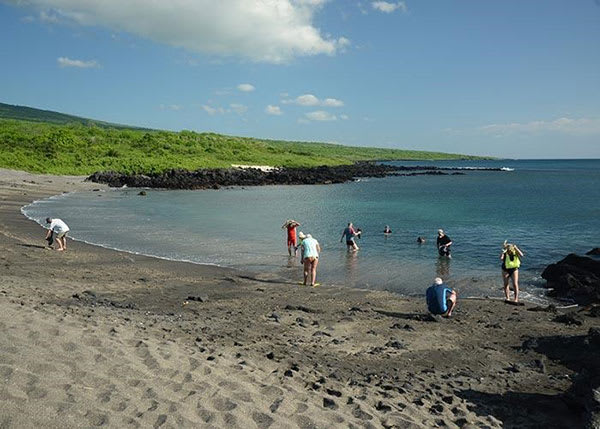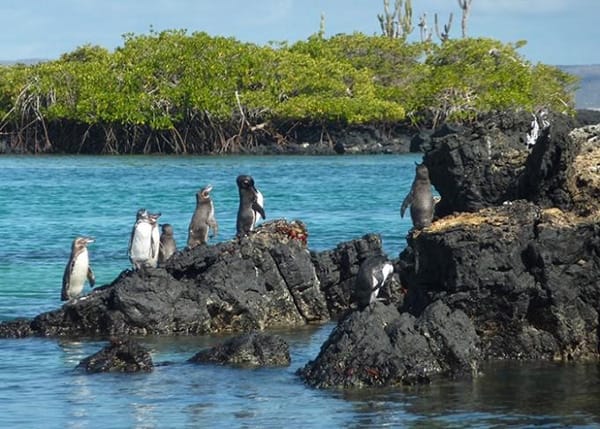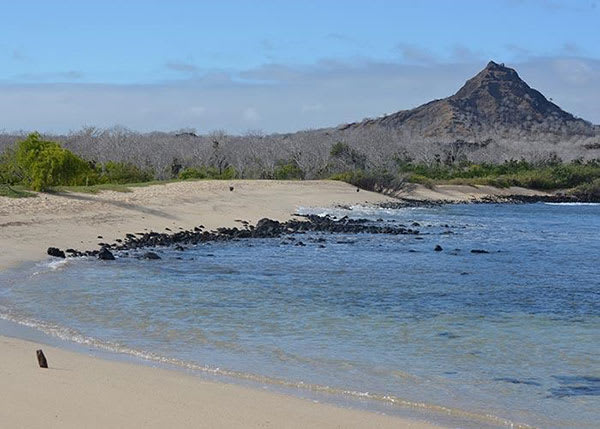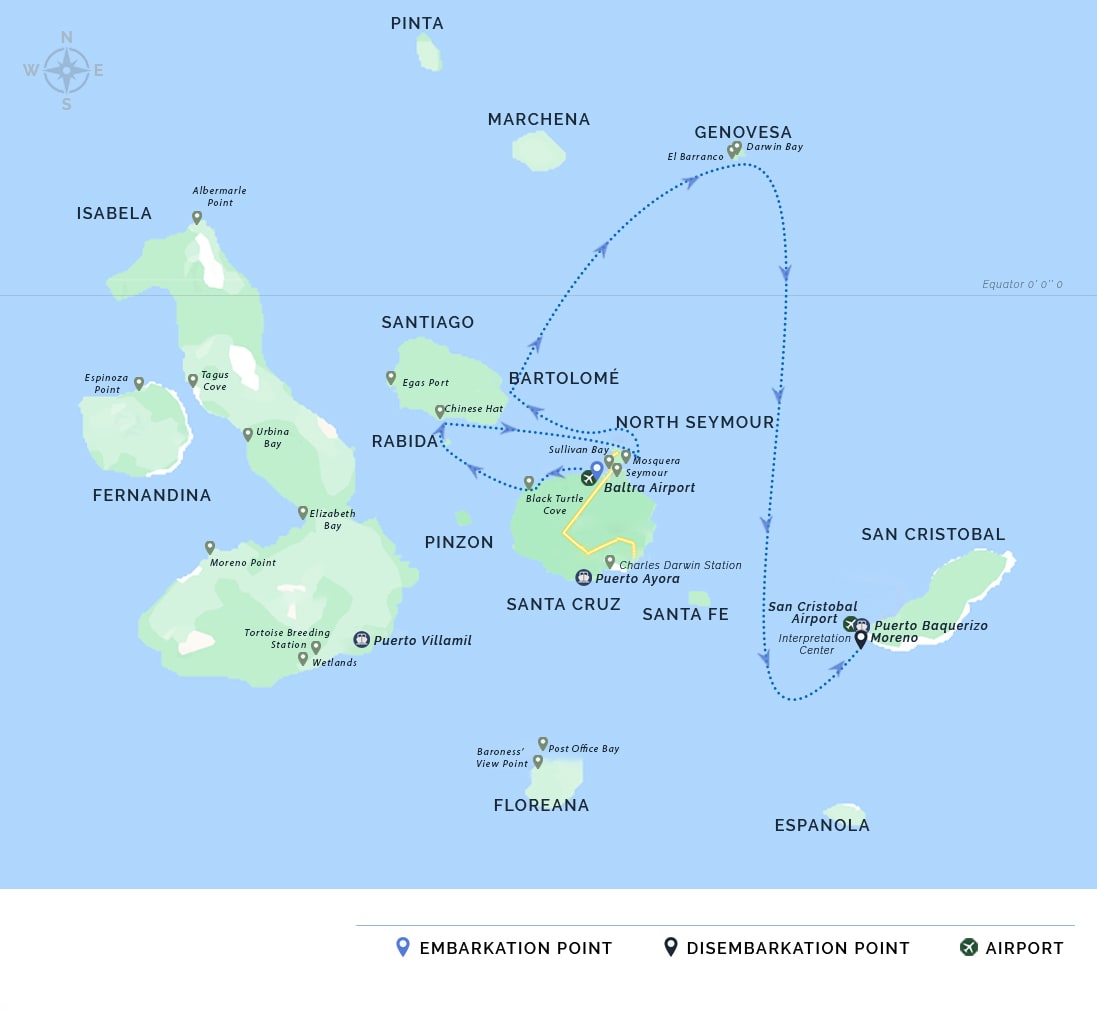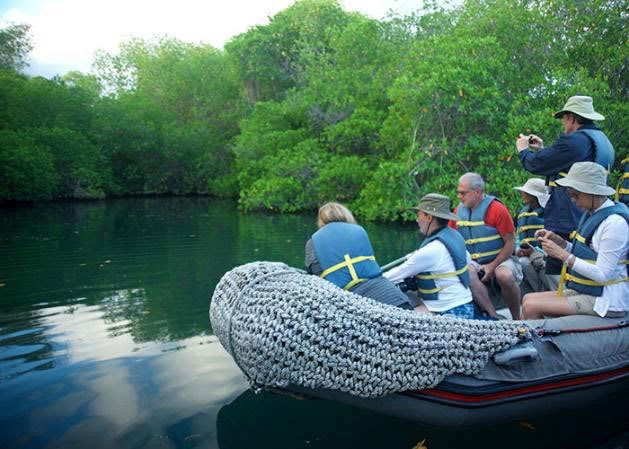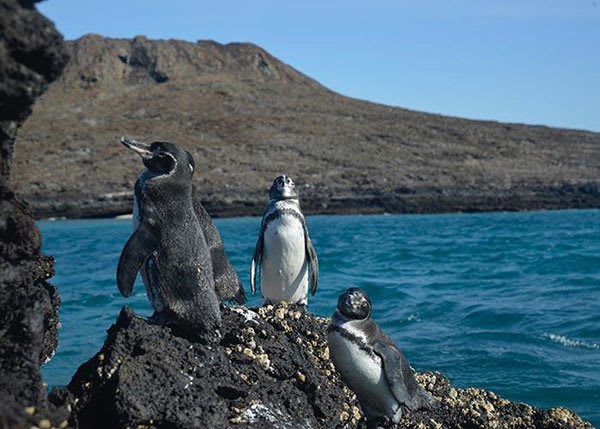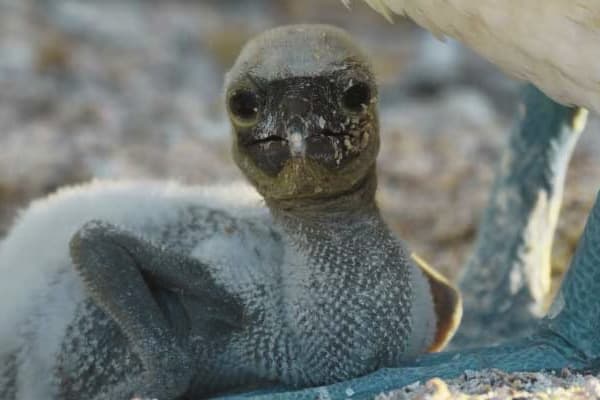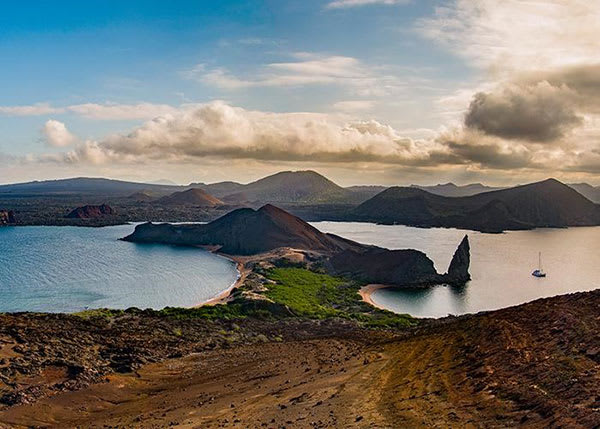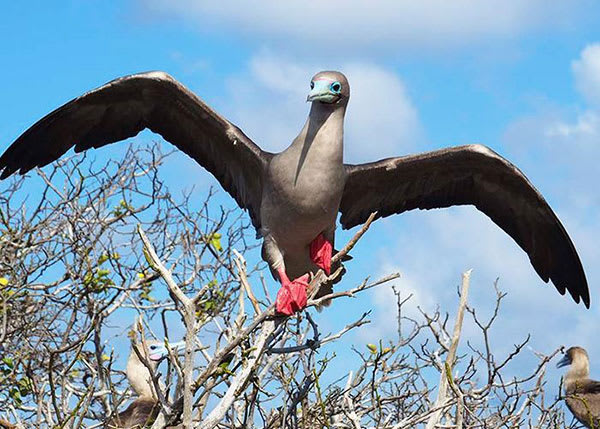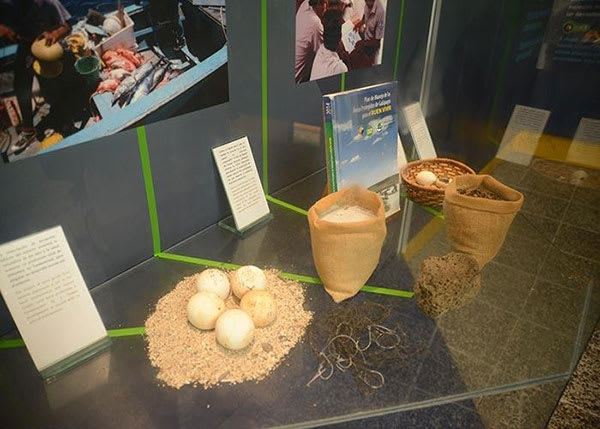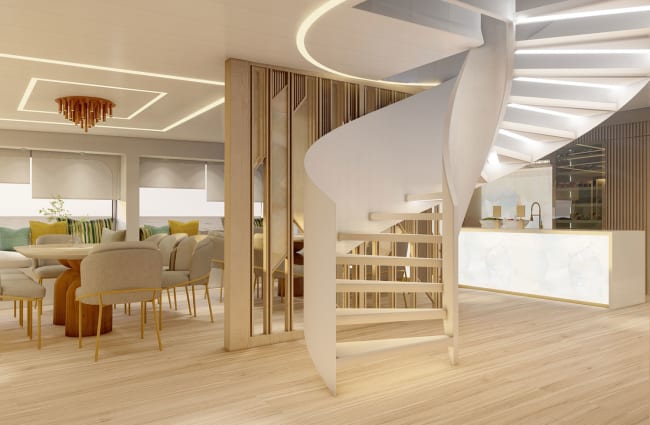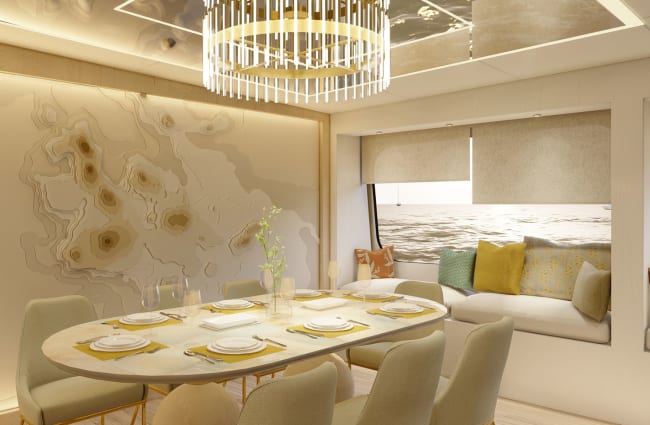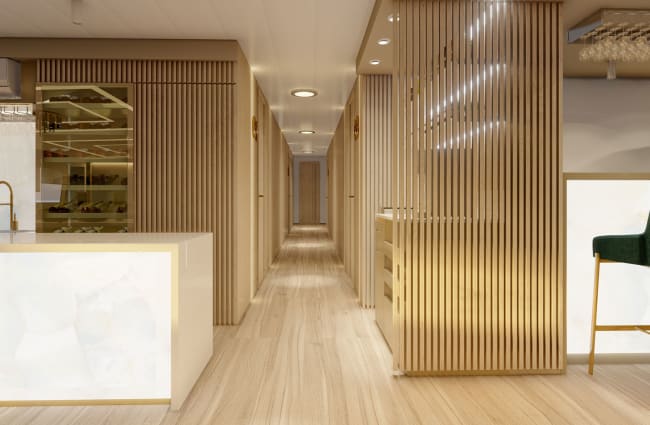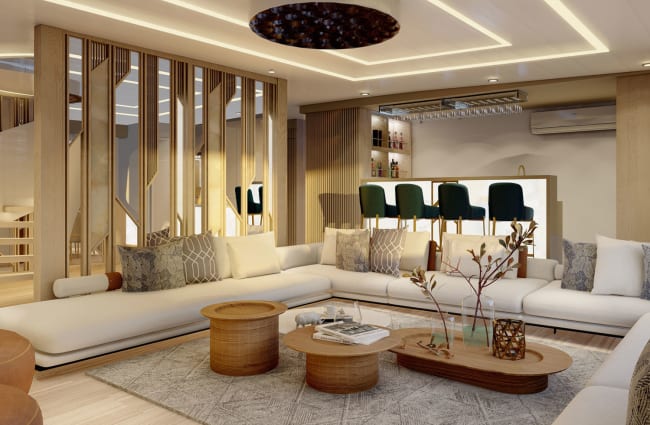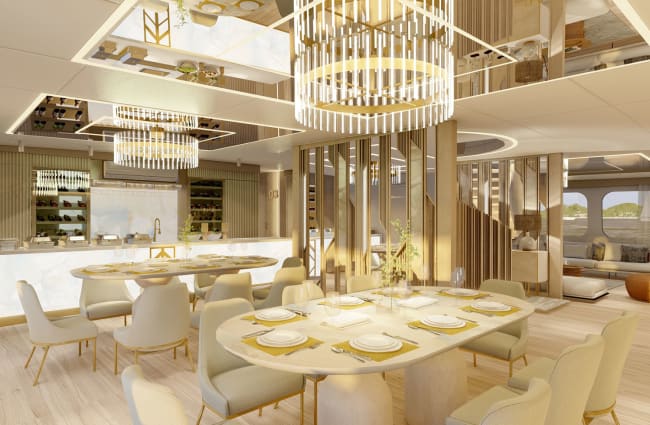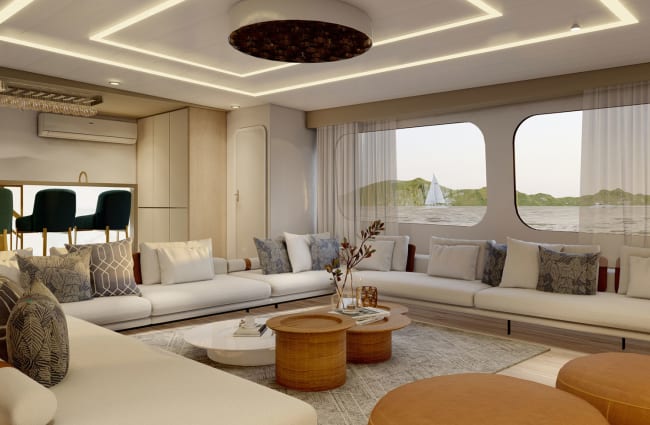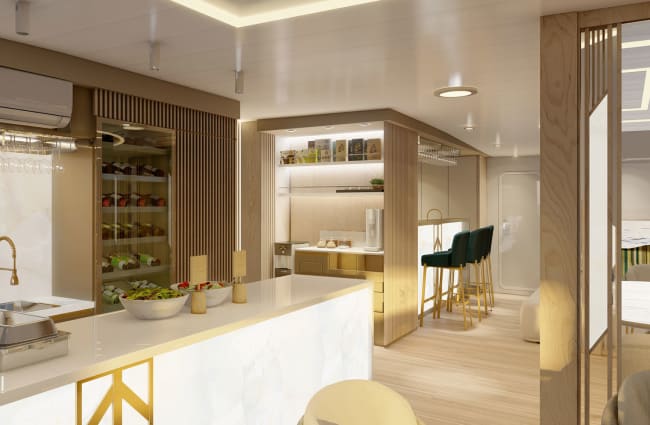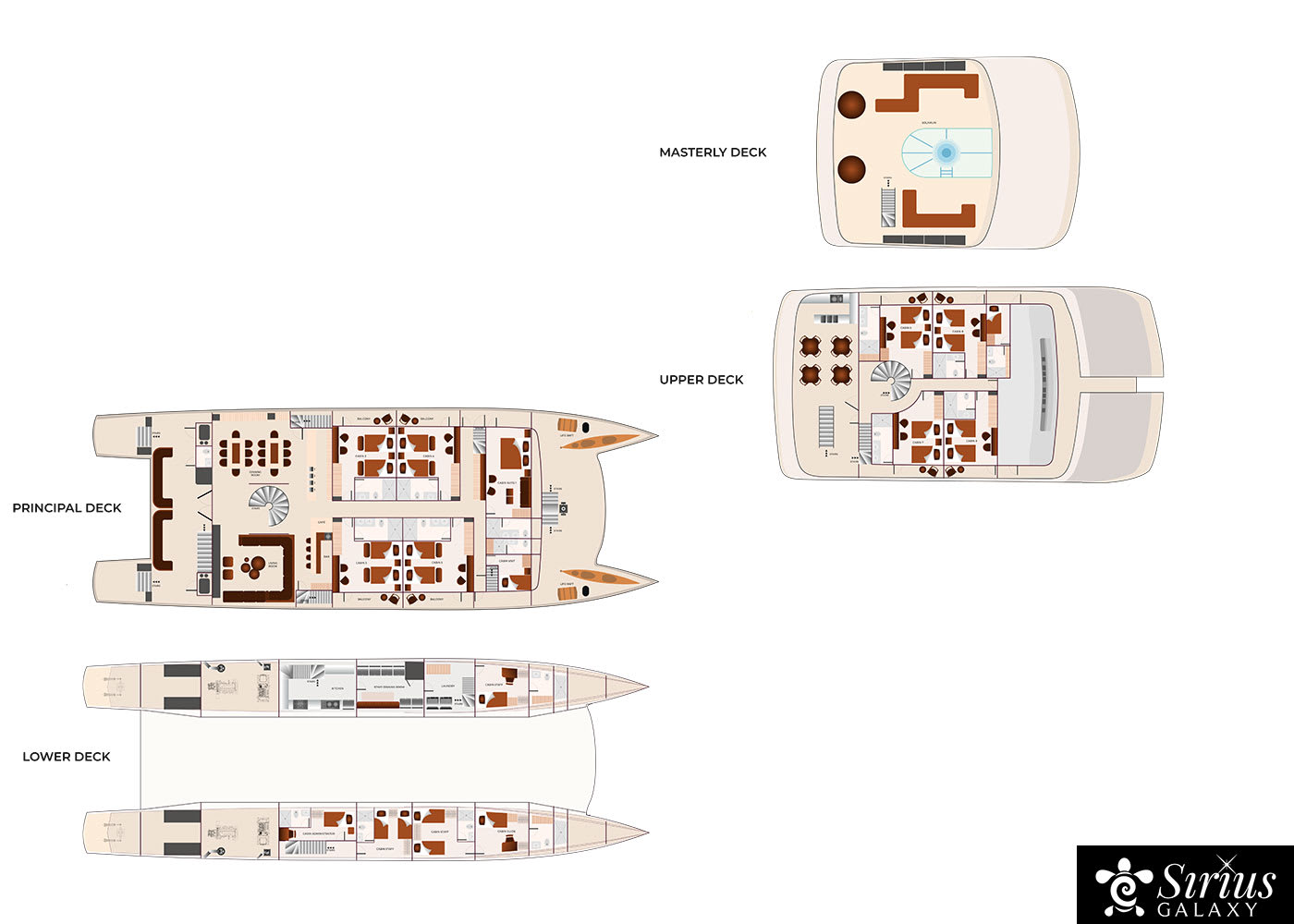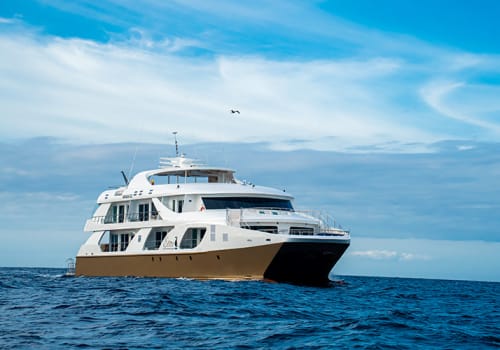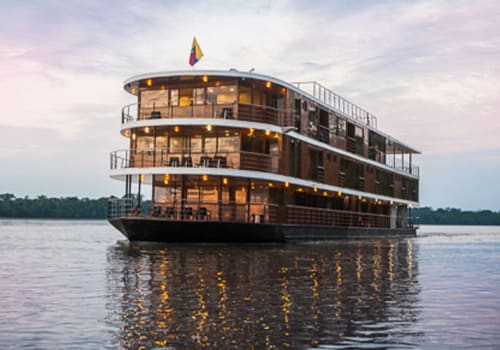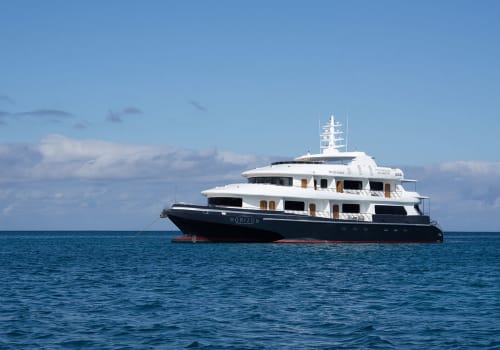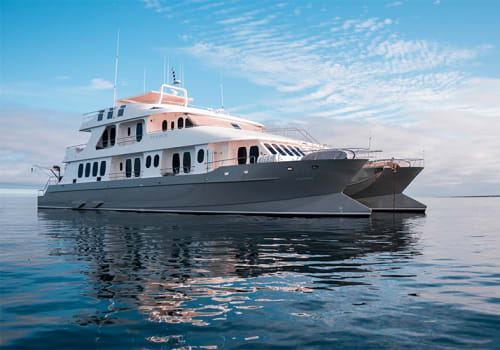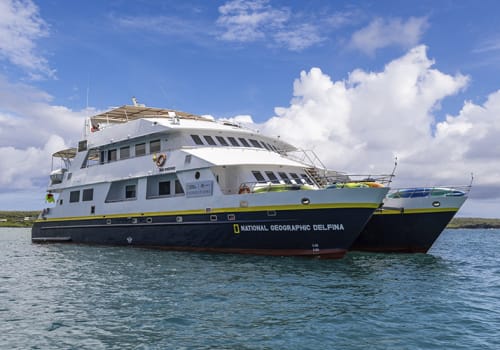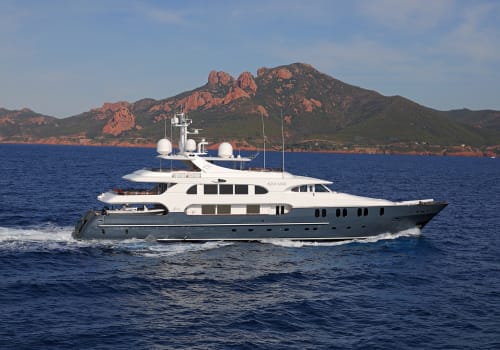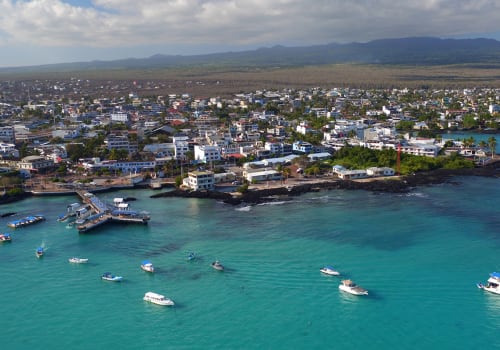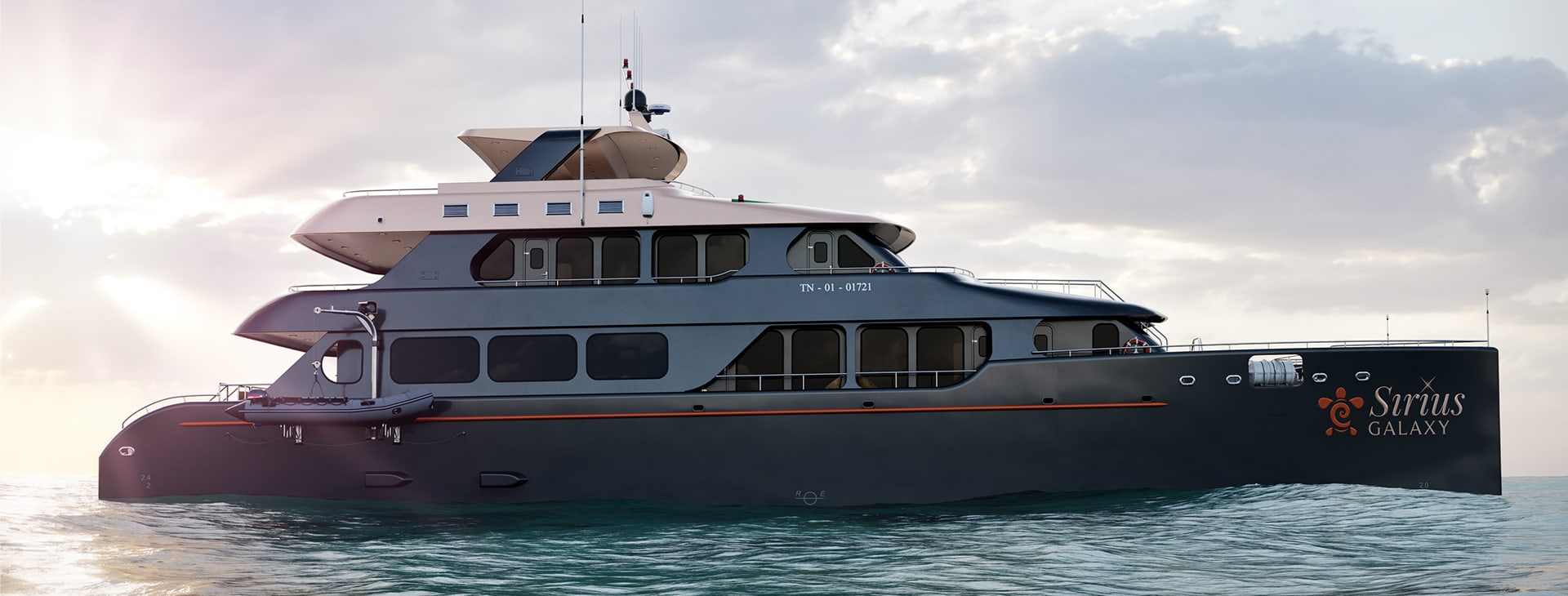

Galaxy Sirius
Overview
With its sleek design and dark color palette, the luxurious, newly-built Galaxy Sirius catamaran is an excellent choice if you’re looking for an exceptional and exclusive experience in Galapagos Islands aboard arguably the best looking vessel sailing the islands.
Named after the brightest star in the sky, it’s perhaps no surprise that it’s not just her exterior that dazzles. With a capacity of 16 passengers in nine cabins, you’ll receive personalized attention from her 12 crew members—including an experienced cruise director and two expert naturalist guides—and the ship’s luxurious amenities and facilities offer unparalleled comfort, making it an ideal base for your Galapagos Islands adventure.
Life on Board
The Galaxy Sirius catamaran boasts impressive facilities to ensure you have a comfortable and enjoyable stay. Each of the nine stunning staterooms on board ensure you have a perfect night’s rest with their plush paraphernalia, offering luxurious twin or king-size beds, ample balconies (just one cabin does not have a balcony), large windows, air-conditioning, ensuite facilities, and premium toiletries.
The principal deck has four cabins with balconies, an additional cabin without a balcony to the bow, the dining room, a coffee station, the living room, and the bar, plus some cozy outdoor seating to the rear. The upper deck features the bridge, behind which are four more cabins with balconies, and an alfresco area to the rear. Above it, the sun deck is the perfect location to relax and unwind with its wide solarium, Jacuzzi, and lazy chairs.
The elegant living room is perfect for relaxing and socializing with your fellow travelers, while the alfresco lounge provides a stunning location to immerse yourself in the beauty of the Galapagos Islands. Elsewhere the dining room offers an elegant atmosphere to savor the exceptional cuisine prepared by the expert chefs, and the sun deck provides the privileged position from which you can enjoy the cool sea breeze, stargaze, or soak up the sun as you take in the stunning panoramic views.
Cuisine
The Galaxy Sirius offers a culinary journey like no other, with gastronomic delights prepared by experienced chefs in the kitchen located on the lower deck and served in the dining room on the principal deck or in the alfresco lounge on the upper deck.
Sample Ecuador’s rich and exotic flavors, as well as other international delicacies, masterfully crafted to tantalize your taste buds. The world-class cuisine features everything from exotic seafood to sumptuous meats and decadent desserts, each dish meticulously crafted to exceed your every expectation.
Elevating your onboard experience further, the ship’s handpicked selection of drinks will suit every taste and preference, with the talented bartenders crafting the perfect drink for you. Should you need to quench your thirst further, there is also unlimited purified water, tea, and coffee available on board.
Activities
The Galaxy Sirius catamaran offers an array of activities to explore the mesmerizing underwater world of the Galapagos Islands, including snorkeling, kayaking, and paddle-boarding. Additionally, thrilling panga rides allow you to discover the diverse shorelines and marine environs without getting so wet, and hiking excursions offer an exhilarating exploration experience, crossing scenic trails by foot while keeping a keen eye on the lookout for the archipelago’s breathtaking flora and fauna.
Every step of the way, your expert naturalist guides will be on hand to impart their knowledge and take you to the best spots to safely observe the islands’ unique wildlife, ensuring an unforgettable experience.
The Galapagos Islands are home to some of the planet’s most breathtaking biodiversity, and you’ll have the opportunity to see magnificent creatures like marine iguanas, giant tortoises, and blue-footed boobies. You can witness their wonderful wildlife up close and explore their enchanted shores on Sirius’ choice of three itineraries: a 5-day southern islands itinerary; and two 6-day itineraries to either the western or northern islands.
The sleek Galaxy Sirius catamaran offers an exceptional and exclusive experience in the Galapagos Islands aboard one of the most stylish vessels around. With luxurious amenities and facilities, expert guides, and world-class cuisine, you’re sure to have an unforgettable adventure.
Itineraries & Prices
All itineraries are subject to change due to seasonal weather conditions (and resultant variations in river and tributary water levels) affecting accessibility to locations. Thus navigation routes, times and excursions may need to be modified at the cruise captain’s or your guide's discretion.
Accommodations
Social Areas
Suites & Cabins
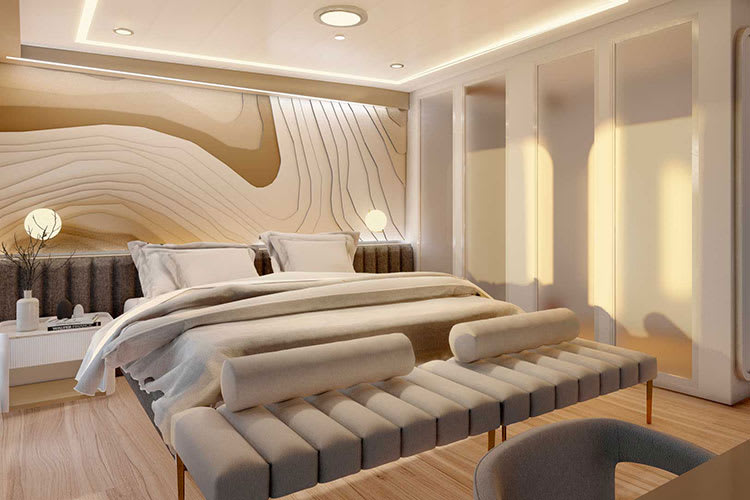
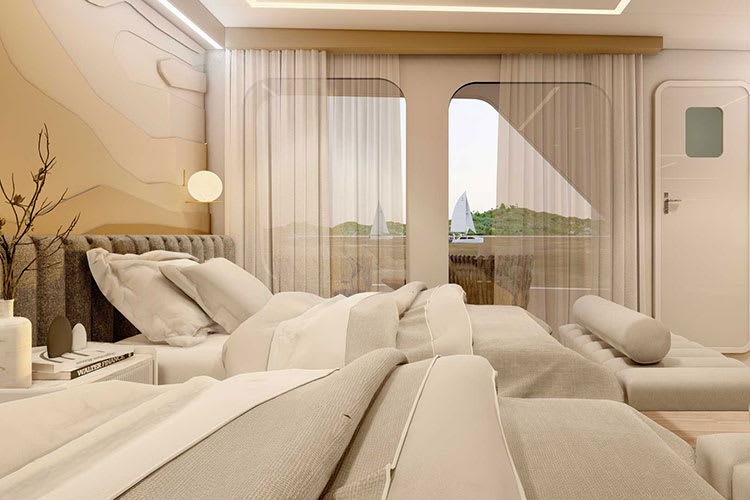
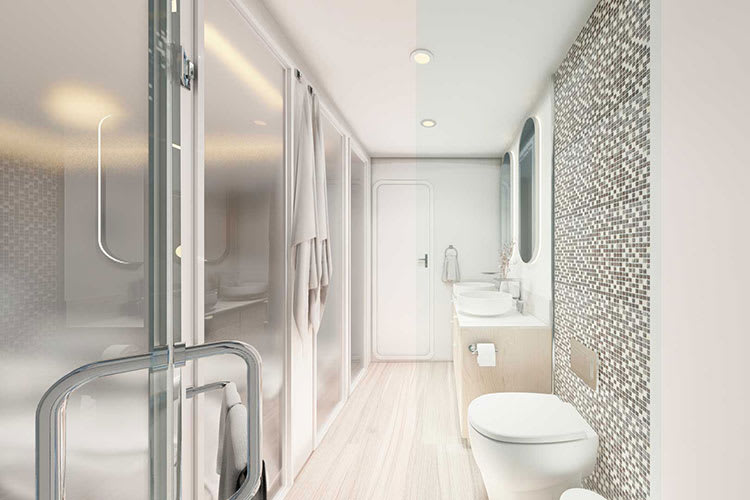
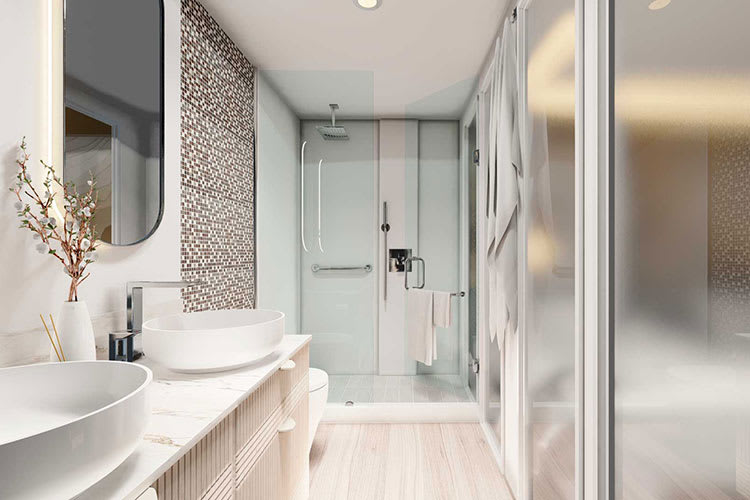
Stateroom
Spacious double staterooms with ample balconies are designed to offer an elegant and comfortable accommodation experience, with a luxurious king-size bed, large windows providing breathtaking views of the Galapagos Islands, and a private bathroom with premium toiletries.
Technical Information
Features
- Cabins with balconies
- Air conditioning
- Deck shower
- Pool / Jacuzzi
- WIFI available
- Solar Energy
- Hot showers
- Charging areas for electronic equipment
Equipment
- Satellite phone
- Snorkeling gear
- Wetsuits
- Stand up paddleboard
- Kayaks / Canoes


